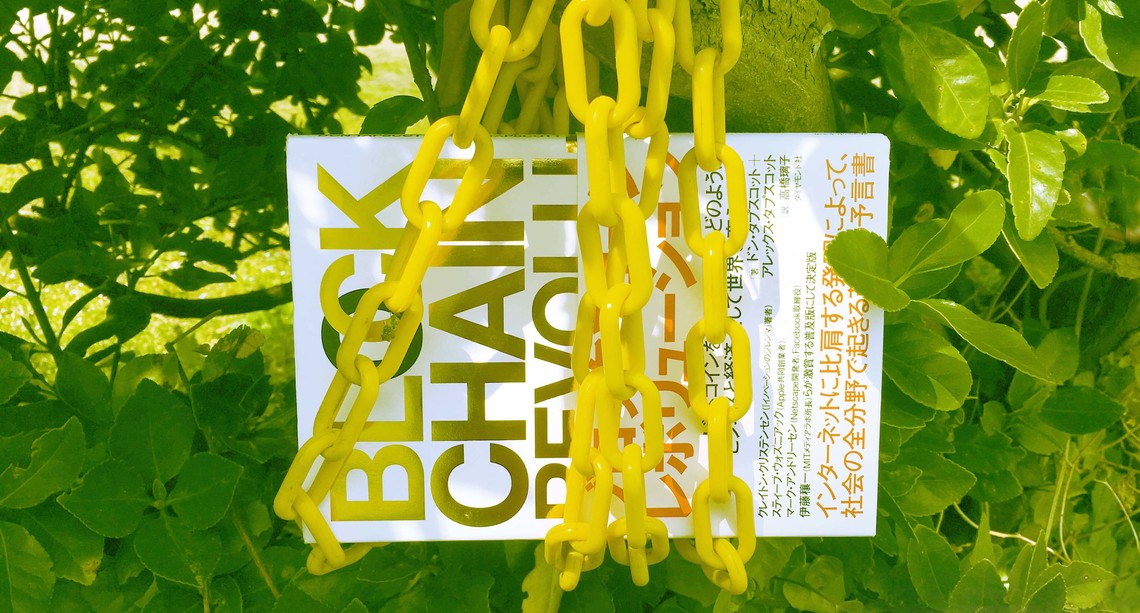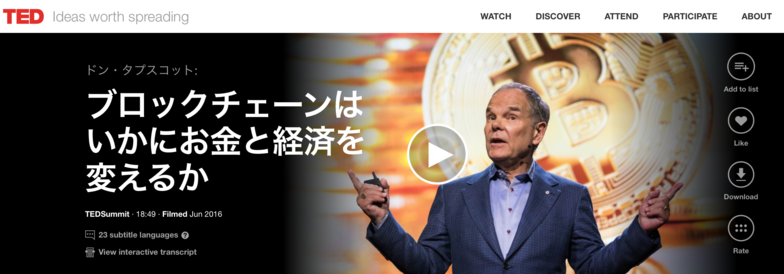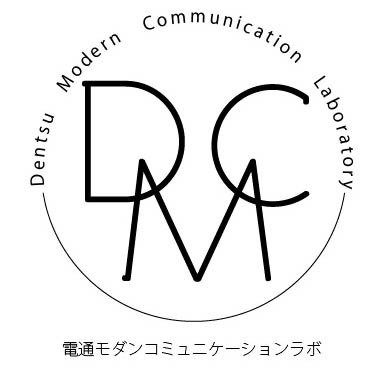Note: This website was automatically translated, so some terms or nuances may not be completely accurate.
Blockchain for Beginners
"The same level of excitement, if not more, than I felt during the dawn of the internet."
An entrepreneur posted this comment on social media about six months ago. The topic was "blockchain." It seems like something you should probably know about now.
So this time, we introduce 'Blockchain Revolution' (Diamond Inc.), a textbook on the subject co-authored by Don Tapscott and his son Alex Tapscott. Honestly, we've introduced many books here, but this is the one that got me the most hyped up.

The Internet up until now was the "Age of Duplication"
The internet is convenient, right? Searching, emailing, sharing. According to the authors, this was the "Internet of Information." For example, this manuscript I'm writing, feeling terribly guilty about missing deadlines. Attach it to an email and send it, and it reaches the editor in no time. At this point, the data remains right here on my computer. It doesn't vanish cleanly from my PC the moment I send it.
The Internet excels at exchanging copies.
But when "valuable things" get copied, it's a big problem. For instance, suppose I send money to a friend over the Internet. Even after paying 10,000 yen, I still have 10,000 yen left. Personally, this is the happiest state possible, but as a mechanism supporting the economy, it's the worst. This is called the "double-spending problem." It's not just money; it's also stocks, bonds, intellectual property rights, and even movies, music, artworks—things that shouldn't be copied. How should we handle these on the internet? This has long puzzled scholars.
Blockchain enables the exchange of value
That said, you can already send money to friends over the current internet. This is possible because of intermediaries: central institutions like banks and securities firms. While these central institutions offer many benefits, they also create inconveniences. For example, sending money to a friend on the other side of the globe. Multiple institutions act as intermediaries, each charging fees. The internal processing takes days. Blockchain allows us to exchange, store, and manage such valuable assets without relying on central institutions.
After all, the essence of blockchain lies above all in the exchange of value (especially money). (P.12)
So how will the future change?
Why is this even possible? ...Let's put the complicated technical details on hold for now.
What kind of future will actually arrive? Let's talk about that (exciting) part first.
The internet reduced the costs of research and coordination.
Blockchain will reduce the costs of contracts, monitoring, and enforcement.
For example, changes like these are already starting to happen.
① Value exchange becomes easier
Money transfers become more free
Banks and credit card companies incur significant costs building and operating payment systems, plus verifying individual identities. These costs were passed on as fees to users and merchants. Furthermore, because multiple companies are involved, data transfers often meant purchases took days to settle. However, blockchain systems handle these functions themselves, enabling parties to settle transactions with virtually no fees.
Cheaper, Faster, Easier International Money Transfers
Mobile money transfer service Abra has developed a blockchain-based international remittance network. Transfers that previously took a week now take minutes, and fees have been reduced from 7% to just 2% (in fact, the largest inflow of funds into developing countries isn't government aid or investment, but these personal "remittances").
Fair trade expands to content like music and the sharing economy
When you buy an artist's new song. When you hail a taxi or rent a room through a sharing service. Typically, a platform company exists as the intermediary, right? Blockchain automates this, enabling direct purchases and connections. Worries like platforms suddenly changing their terms and reducing your profits... disappear.
② Shared ledgers boost efficiency
Trade transactions become standardized and smoother
For example, NTT DATA is promoting blockchain-based efficiency improvements in areas involving multiple organizations. Take trade: information gets relayed via email, phone, paper, fax, and other disparate methods from countries to companies to individual business owners. They've already successfully conducted proof-of-concept experiments introducing blockchain to enable simultaneous sharing of necessary information.
③ Past information is stored tamper-proof, so the system guarantees trust
Everything from production processes to transaction histories can be centrally managed
In the UK, Leanne Kemp founded Everledger, a startup managing diamonds via blockchain. Even today, original quality certificates remain essential for transactions. No matter which country they travel to, the original certificate must accompany the diamond, with handwritten signatures added each time. Everledger digitizes these certificates, scans each diamond to assign a unique ID, and stores all this information on the blockchain.
Ambiguous land ownership becomes clear
In Honduras, it was common for high-ranking government officials to seize land using falsified documents they created themselves. To address this, Honduras is building a system using blockchain where the private sector and government collaborate to manage land.
Blockchain Mechanics for Dads
Now that blockchain might seem like magic, let's talk a bit about how it works.
It's a clever combination of P2P network technology—where computers connect directly—and advanced cryptography. For instance, any digital asset—money, music, land ownership—is placed on a ledger protected by top-level encryption. This ledger isn't stored on a single server. It's distributed across millions of computers worldwide. When a blockchain transaction occurs, the transaction details are sent to every single one of those computers.
"Hold on. If everyone manages it, what if bad actors sneak in?"
The solution to this problem is a mechanism called "Proof of Work." Simply put, it's a system that grants management rights only to those who perform tasks that require significant time and cost, not just those who contribute the most. These hardworking individuals are called miners.
Miners pack all the transaction data from around the world into a single "block" every 10 minutes. These miners are incredible. Combined, they're said to have processing power 10 to 100 times greater than Google's entire company – a group with monster specs. Once the block is created, the miners start a time-consuming cryptographic puzzle competition.
This decryption is incredibly tedious. How tedious? You have to perform calculations 10 to the 20th power times (that's beyond trillions or quadrillions—it's a gazillion. You only hear that in comedy sketches).
The first one to solve it receives digital currency as a reward. That's why everyone works so hard. Once they finish decrypting, they verify their answer with other miners. If it's correct, the block is officially recognized by the system. This block isn't stored randomly like a container; it's linked to the previous blocks and managed as one. Yes, like a chain. That's why it's called a blockchain.
Even if someone tried to hack and alter transaction data, they'd have to rewrite every single block all the way back up the chain. In that earlier cryptography race, they'd have to beat every single miner worldwide. Realistically, that's pretty much impossible. That's why blockchain is secure. You could also say the system automates the role of a central authority.
A mysterious origin story that could be a movie someday
In 2008, the year the world reeled from the financial crisis, a paper signed "Satoshi Nakamoto" was released. It described a completely new mechanism for digital currency. This paper became the starting point for the Bitcoin era that has gained momentum in recent years... but actually, the paper's significance doesn't stop there. The real groundbreaking invention was blockchain—the technology underpinning digital currency. The identity of Satoshi Nakamoto remains shrouded in mystery. Whether it's an individual or a group remains unknown to this day (I hope the mystery gets solved someday and gets made into a movie!).
This book doesn't focus on the future; it focuses on the people taking action today for the future.
144 people.
What does this number represent? It's the total number of interviewees listed at the end of this book. Based on meticulous interviews with individuals from different countries, ages, and backgrounds, this book is packed with countless examples, projects, and ideas. Blockchain transcends being just a technology; it's a philosophy. Everyone is starting new businesses based on this philosophy. The words of these people challenging themselves while envisioning the future are all deeply moving. This book makes you realize you're right in the middle of a turbulent era.
Finally, here are two links to help you understand blockchain better.
First, a presentation by the author, Don Tapscott, is available on TED. It's incredibly easy to understand, especially with the visuals. It's a quick 18 minutes.
http://wired.jp/magazine/vol_25/
【Dentsu Inc. Modern Communication Lab】
Was this article helpful?
Newsletter registration is here
We select and publish important news every day
For inquiries about this article
Back Numbers
Author

Takuya Fujita
Dentsu Inc.
Creative Planning Division 3
After graduating from Kyoto University's Faculty of Engineering and the Graduate School of Engineering at the University of Tokyo, I joined Dentsu Inc. I'm a copywriter. I also tweet daily on Twitter.





